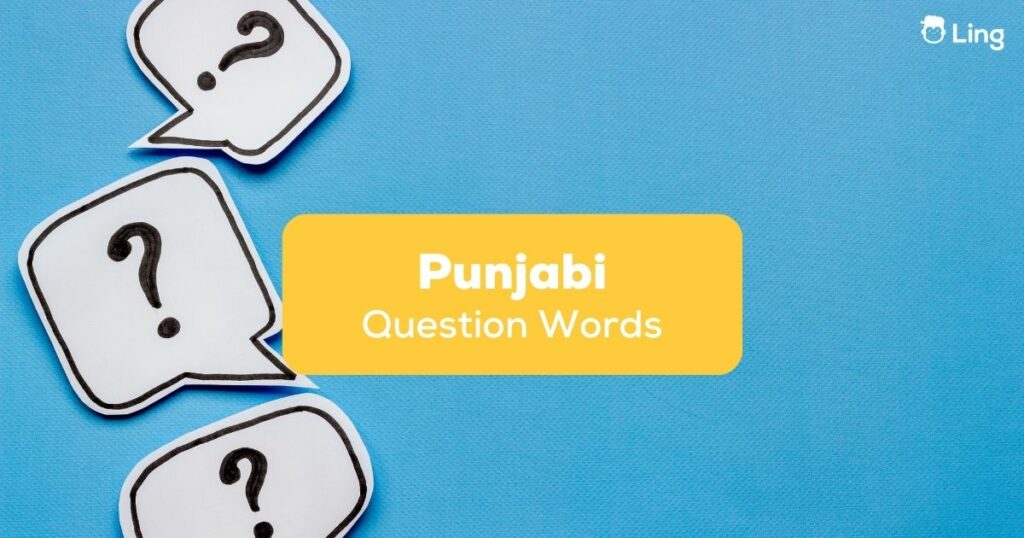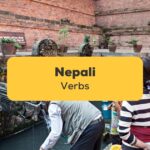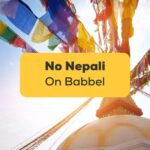Learning how to ask for help or clarification with Punjabi question words and phrases can help you avoid confusion with the Punjabi people.
In today’s post, we will walk you through the common words you can use for constructing questions in the Punjabi language that can be useful especially when the unexpected strikes. Let’s get to know more about this in this post today!
Asking Questions In Punjabi
Have you ever gone through Punjabi streets and heard people say things like Tusī kithe de hō? (Where are you from), Tusī ithē ki’uṁ ā’ē? (Why are you here) or Kinē hō’ē? (How much)? We recognize that hearing such things might be scary for first-time tourists and that you may really want to nod or hide from the crowd quietly. The unusual tone and pronunciation may appear confusing and alarming, but it does not mean you should be afraid.
Punjabi question words, like English, features interrogative terms for asking for more particular information than a yes-no inquiry can give. The word order is comparable to English when using these openers, with the verb coming after the interrogative. In this article, we will focus on learning Punjabi question words and phrases.

Punjabi Question Words
If you are learning Punjabi Questions, use these interrogative expressions and Punjabi question words to aid with Punjabi grammar. Concentrate on the lesson and observe the pattern that emerges each time the word is moved.
| English | The Function Of Interrogative Words | Punjabi | Pronunciation |
|---|---|---|---|
| Questions | To ask | ਸਵਾਲ | Savāla |
| How? | For condition or manner | ਕਿਵੇਂ? | Kivēṁ? |
| What? | For information and repetition | ਕੀ? | Kī? |
| Who? | Asking about the subject | ਕੌਣ? | Kauṇa? |
| Why? | For reason | ਕਿਉਂ? | Ki’uṁ? |
| Where? | For place or position | ਕਿੱਥੇ? | Kithē? |
| When? | For asking time | ਕਦੋਂ? | Kadōṁ? |
| Whose? | Asking about ownership | ਕਿਸਦਾ? | Kisadā? |
| Whom? | Asking what or which object | ਕਿਸਨੂੰ? | Kisanū? |
Punjabi Question Words And Phrases
Knowing how to formulate a question is important for achieving a high skill level in your target language. It also allows you to move around quickly, but it also helps you express your respect for the local language. You can even learn these words to integrate in Punjabi greetings.
In the table below, you will find a list of Punjabi question words and interrogative phrases. Memorizing this table can help you expand your Punjabi vocabulary with beneficial and vital terms. Please keep in mind that the information presented here is suitable for usage in all tenses.
| English | Punjabi | Pronunciation |
|---|---|---|
| Can I help you? | ਕੀ ਮੈਂ ਤੁਹਾਡੀ ਮਦਦ ਕਰ ਸੱਕਦਾ ਹਾਂ? | Kī maiṁ tuhāḍī madada kara sakadā hāṁ? |
| Can you help me? | ਕੀ ਤੁਸੀ ਮੇਰੀ ਮਦਦ ਕਰ ਸੱਕਦੇ ਹੋ? | Kī tusī mērī madada kara sakadē hō? |
| What is this called? | ਇਸ ਨੂੰ ਕੀ ਕਹਿੰਦੇ ਹਨ? | Isa nū kī kahidē hana? |
| What is this? | ਇਹ ਕੀ ਹੈ? | Iha kī hai? |
| Why is it expensive? | ਇਹ ਮਹਿੰਗਾ ਕਿਉਂ ਹੈ? | Iha mahigā ki’uṁ hai? |
| How much is this? How many? | ਇਹ ਕਿੰਨਾ ਹੈ? ਕਿੰਨੇ? | Iha kinā hai? Kinē? |
| Where do you live? | ਤੁਸੀਂ ਕਿਥੇ ਰਹਿੰਦੇ ਹੋ? | Tusī kithē rahidē hō? |
| Where is the toilet? | ਟਾਇਲਟ ਕਿੱਥੇ ਹੈ? | Ṭā’ilaṭa kithē hai? |
| Do you love me? | ਕੀ ਤੁਸੀ ਮੈਨੂੰ ਪਿਆਰ ਕਰਦੇ ਹੋ? | Kī tusī mainū pi’āra karadē hō? |
| Can I come by? | ਕੀ ਮੈਂ ਆ ਸਕਦਾ ਹਾਂ? | Kī maiṁ ā sakadā hāṁ? |
| Do you know me? | ਕੀ ਤੁਸੀਂ ਮੈਨੂੰ ਜਾਣਦੇ ਹੋ? | Kī tusī mainū jāṇadē hō? |
| Do you speak English? | ਕੀ ਤੁਸੀਂਂ ਅੰਗ੍ਰੇਜ਼ੀ ਬੋਲਦੇ ਹੋ? | Kī tusī agrēzī bōladē hō? |
| What time is it? | ਸਮਾਂ ਕੀ ਹੈ? | Samāṁ kī hai? |
| How far is this? | ਇਹ ਕਿੰਨੀ ਦੂਰ ਹੈ? | Iha kinī dūra hai? |
| Where is this place? | ਇਹ ਥਾਂ ਕਿੱਥੇ ਹੈ? | Iha thāṁ kithē hai? |
| Is he your brother? | ਕੀ ਉਹ ਤੁਹਾਡਾ ਭਰਾ ਹੈ? | Ki uha tuhāḍā bharā hai? |
| Is he is your son? | ਕੀ ਉਹ ਤੁਹਾਡਾ ਪੁੱਤਰ ਹੈ? | Ki uha tuhāḍā putara hai? |
| Do you like going to parties? | ਕੀ ਤੁਸੀਂ ਪਾਰਟੀਆਂ ਵਿੱਚ ਜਾਣਾ ਪਸੰਦ ਕਰਦੇ ਹੋ? | Ki tusī pāraṭī’āṁ vica jāṇā pasada karadē hō? |
Punjabi words and phrases play a significant role in the Punjabi language. You might want to check out the rest of our Punjabi articles once you’ve finished learning these Punjabi questions.
Basic Facts About The Punjabi Language
One of the most frequently verbal Indo-Aryan languages to exist is Punjabi. Punjabi speakers were over 30 million in India in the early twenty-first century. It is the official and state language of the Indian Punjab and one of the Indian constitution’s recognized languages. Punjabi is spoken by almost 70 million people in Pakistan, while Urdu has official status at both the national and provincial levels.
Punjabi speakers also form a significant diaspora, notably in Canada and the United Kingdom. Here they were the third and fourth biggest linguistic groupings in the national populations in the early twenty-first century, respectively, and in numerous regions of the United States. Everywhere you go, people are pleasant and welcoming. Don’t forget to say Meharbaani, which means “thank you,” to your host if you’re invited to a private house for a meal!
Learn Punjabi With Ling
Do you want to learn how to arrange better and build sentences, enhance your Punjabi vocabulary, and grasp the grammar? You can take your language learning on the move with the Ling app. The app will introduce you to a fresh and exciting approach to studying Punjabi and over 60 other languages! The following are some of the app’s advantages:
- It focuses on important words, phrases, and expressions that can be utilized in real-life conversations!
- It employs gamified material to keep you engaged and motivated to study for at least 10 minutes every day!
- The app’s material is created and confirmed by genuine native speakers and language experts.
- It helps you memorize and helps you comprehend the vocabulary and cultural meanings of each term.
So, download the app from the App Store or Play Store and master your target language!
Updated by Punya



































































